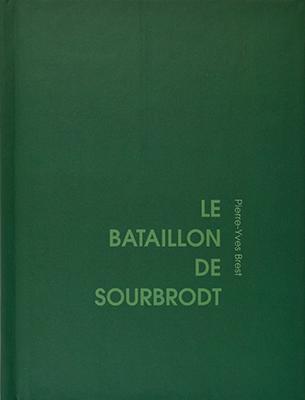Le Bataillon de Sourbrodt
Pierre-Yves Brest, Le Bataillon de Sourbrodt (The Sourbrodt bataillion), Un, deux...Quatre éditions, 2007
French, german, english, nederlands and russian
48 pages ; 11 x 15.5 cm.
ISBN 978-2-35145-056-7
| Unit Price: | 12.00 € |
| Shipping costs | 2.00 € |
| Total amount | 14.00 € |
The Sourbrodt Battalion
The village of Sourbrodt stretches over the plateau of Hautes-Fagnes, at the highest point of the Belgian Ardennes. In March 1943 a prison camp for Russian soldiers is established at Bôsfagne on the fringes of the village. Sourbrodt is edged by large expanses of forest and peat bogs towards the North. The camp groups together about fifty men principally employed in forestry work. In winter the dull landscape of the high plateau is battered by the North East winds. The camp is composed of two huts encircled by a double fence of barbed wire. The sodden ground of the peaty plateau makes all progress, human or animal, slow and difficult. Two men die during their forced stay in the Sourbrodt camp. The decomposing plants in the water of the fen-lands form a thick soft and unstable carpet. At the beginning of the month of September 1944 the prisoners are transferred to a neighbouring camp at Elsenborn then evacuated without delay towards Germany where any trace of them is lost for ever. On the 21st of April 1996 an accidental fire in the fens hastens the disappearance of the last traces of the Sourbrodt camp.
Translation : Juliet Bates
English translation coming soon
"Le Bataillon de Sourbrodt" est un livre d'artiste et un plongeon au coeur de l’Europe et de son histoire contemporaine. Au travers d’un texte court et d’une vingtaine de photographies, Pierre-Yves Brest confronte deux réalités différentes d’un même territoire naturel, celui de Sourbrodt dans les Hautes-Fagnes belges. Alors que tout semble aujourd’hui conférer à ce paysage frontalier de l’Allemagne la stature apaisée du monument naturel, Pierre-Yves Brest y porte un regard distancié, mettant en tension l’enthousiasme de l’arpenteur photographe qui découvre un territoire aux qualités singulières, avec l’histoire humaine d’une noirceur d’encre. Il y est question de paysages et de sous-bois plongés dans la moiteur de l’été, de curieuses et fragiles architectures inhabitées, de traque animale, de conflit mondial, de soldats russes, d’isolement, de disparition, de mémoire…
Au fil des pages, l’auteur invite le lecteur à mesurer un écart entre l’histoire livrée et la série photographique. Dans cet entre-deux qui se creuse peu à peu, le cours du temps semble s’étirer jusqu’à se figer. Sourd alors l’étrange sentiment que tout peut, une nouvelle fois et d’un moment à l’autre, basculer dans la tragédie.
Attention : Le livre peut être feuiletté sur ordinateur et tablette mais pas sur smartphone.
